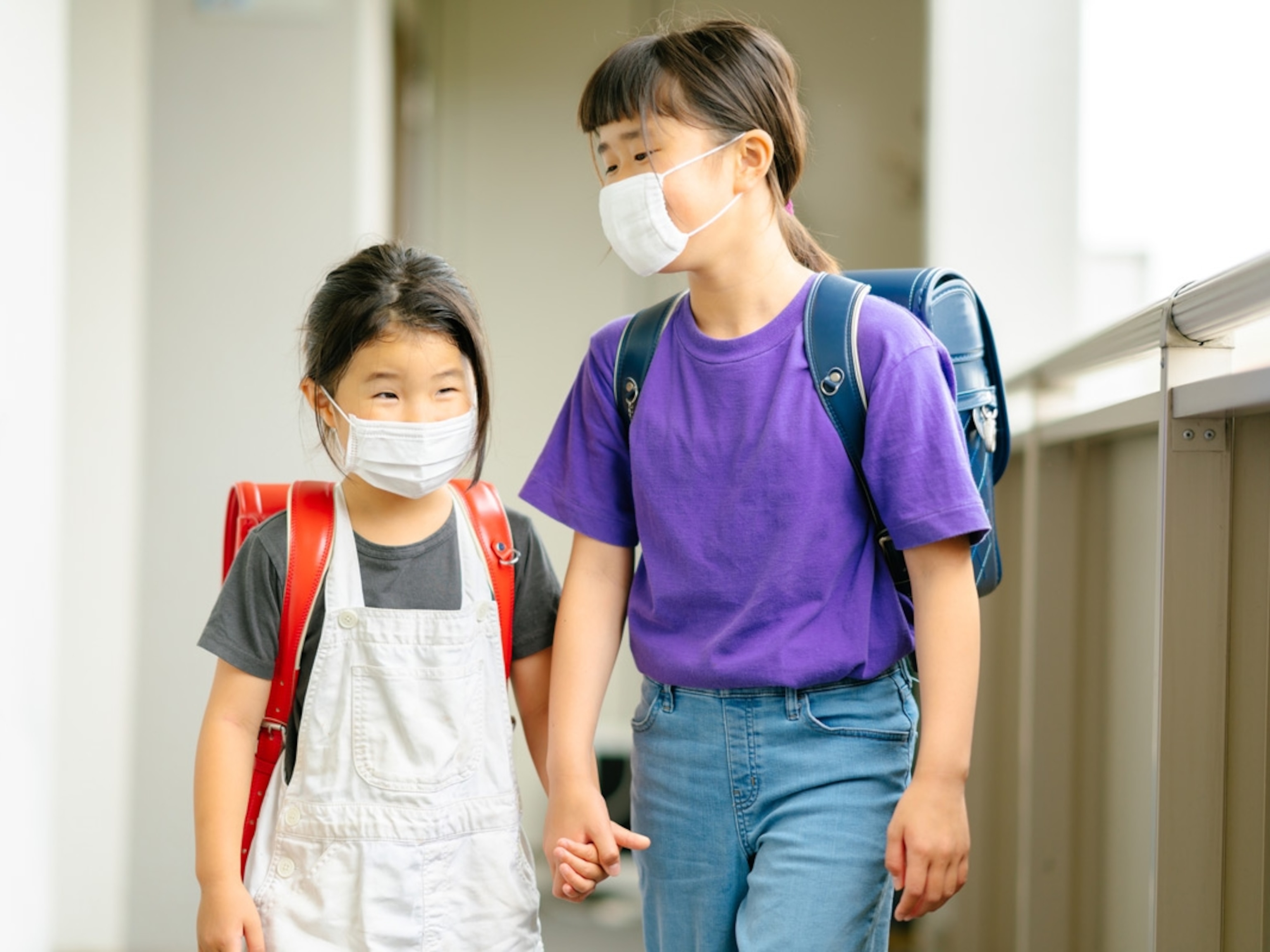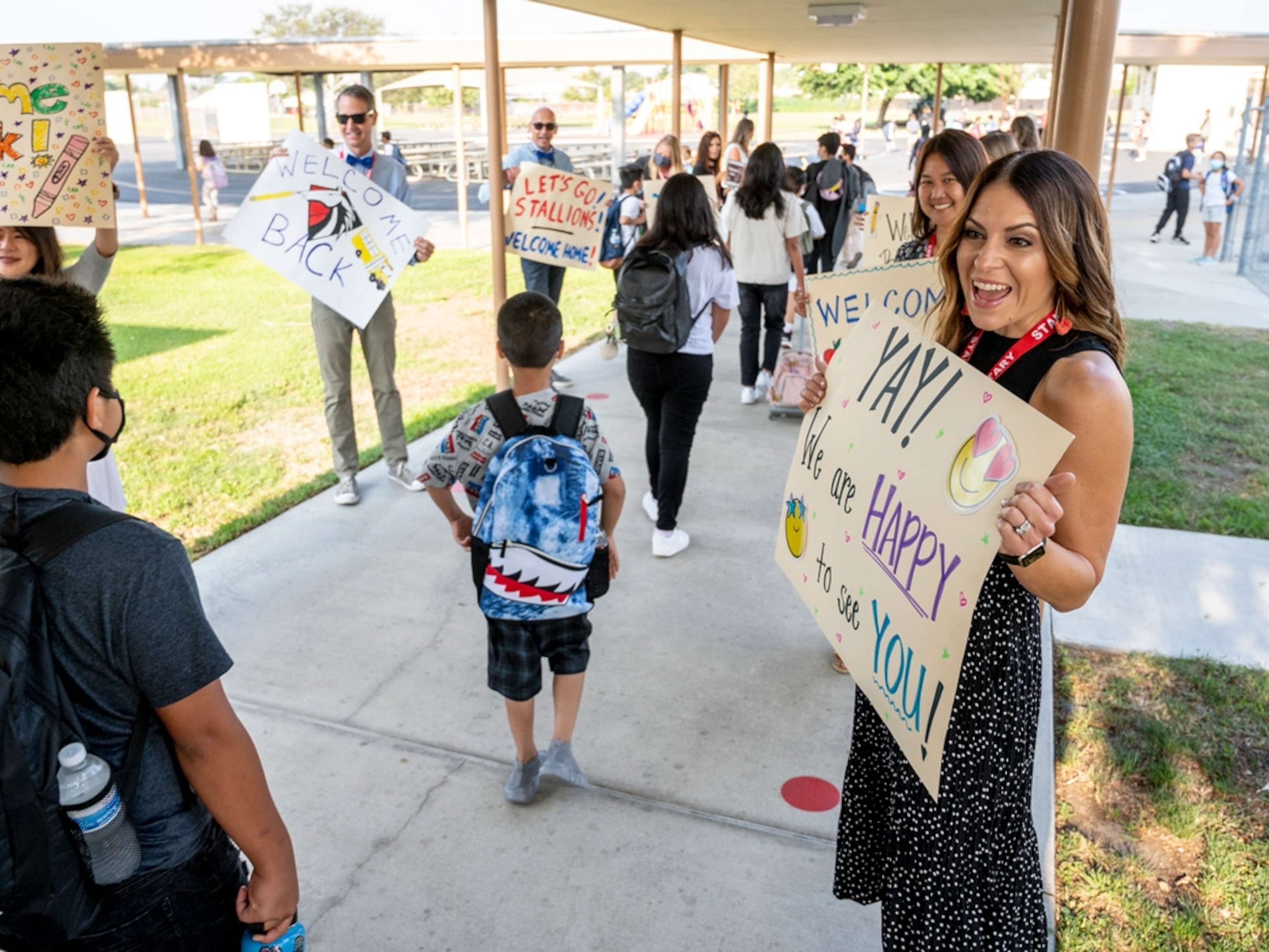
Masked-up kids may struggle to communicate. Here’s how to help.
These tips from the experts—including a retired FBI agent—will help kids translate facial clues and body language.
In addition to new outfits and backpacks, face masks are now an essential addition to kids’ back-to-school gear. According to new guidelines released by the Centers for Disease Control and Prevention, all students and staff should wear masks inside schools, regardless of vaccination status.
But kids used to virtual learning may not have much experience interacting or communicating with their peers or teachers while masked. And parents and child development experts alike are wondering how that will affect children as they return to school.
For instance, to assess whether kids can accurately interpret a masked person’s emotions, researchers from the University of Wisconsin-Madison’s Child Emotion Lab showed children ages seven to 13 pictures of people displaying different emotions. Some faces had no coverings, some wore sunglasses, and others wore face masks. The children had to guess one of six emotion labels: happy, sad, angry, surprised, afraid, or disgusted.
“The main takeaway is that kids were more accurate at guessing the person’s emotions when they weren’t wearing any kind of face covering. And they were less accurate when the person was wearing a face mask or sunglasses,” says Ashley L. Ruba, a postdoctoral researcher who authored the study.
But, Ruba adds, the children weren’t completely clueless when it came to figuring out masked emotions. The study also found that kids’ accuracy didn’t differ between the masks and the sunglasses. “No one’s ever worried about how a kid’s development is going to proceed if people are wearing sunglasses, right?” she notes.
So though experts acknowledge that wearing masks does hinder some social and communication development, they also agree that teaching children skills like reading body language, observing hand gestures, and articulating emotions with words can help kids understand what others are expressing. (This article has advice on getting kids to wear masks in the first place.)
“We’re well equipped to read each other’s body language,” says retired FBI agent Joe Navarro, a body language expert. “Yes, a mask presents a challenge, but you just have to look at what the rest of the body is saying.” Here’s how parents can help kids communicate while wearing masks.
Your face speaks volumes
Humans’ ability to recognize faces is closely tied to the survival of our species. “An individual’s decision to fight, flee, mate, cooperate, or seek protection often depends on the outcome of such recognition,” according to “Development of Face Processing,” a study published in the scientific journal Wiley Interdisciplinary Reviews: Cognitive Science.
The face provides a great deal of information, and the brain organizes that information into two categories: face traits (gender, race, species, identity) and face state (emotional expressions, intention, attention). Face processing begins at birth. Studies have found that newborns prefer face-like stimuli (for example, a simple drawing of an oval face with eyes, nose, and mouth) to non-face stimuli (a drawing of jumbled shapes). Babies also like to imitate another’s facial movements, and they prefer familiar as well as “attractive” faces over unfamiliar and unattractive ones.
There’s also a link between face cues and learning a language. “We know that looking at the mouth is going to help you understand what’s going on and what the person is saying,” says Mathilde Fort, a postdoctoral researcher studying the connection between face cues and language acquisition at the Université Grenoble Alpes in France. “Face cues can help you recognize faces, and it also helps you acquire your native language or a second language.”
Use your words
To make sure kids aren’t missing out on important communication lessons while they’re spending the day with people who are behind a mask, parents can help children practice at home. “Give them the opportunity to experience the various kinds of emotions that our faces show, where they get to experience speech in its full splendor—auditory and visual,” says David J. Lewkowicz, a professor adjunct in the Yale Child Study Center. (Is your child feeling a little socially awkward upon returning to school? These tips can help.)
For instance, face them when you’re playing games so they can see your full face, and express all the emotions you can. The tone of voice, as well as using concise language to express feelings, are also clear cues for kids. For example, parents can say, I’m feeling happy because of this, or, Are you sad because your brother took your toy away?
“When kids are hearing this kind of language, they ultimately develop a better understanding of other people’s emotions just from having these kinds of conversations with their parents,” Fort says. “This is especially important if kids are going to school and they’re wearing masks and other kids don’t have access to the full range of facial information. Talking about how you feel in this explicit way is a good communication strategy for kids, all the way through adulthood.”
Let the body do the talking
Another way children can communicate better while wearing masks? Understanding body language. “We primarily communicate nonverbally,” says Navarro, author of The Dictionary of Body Language: A Field Guide to Human Behavior. “People put so much emphasis on the face when the whole body is transmitting information.”
Try teaching them about body language cues while watching a TV show (with the sound off) or reading a picture book. You can even create a game in which your child tries to identify what a character might be feeling. For instance:
Feet: If a kid’s friend hears good news, she’ll get happy feet and start dancing around. And if a pal no longer wants to sit and eat at the cafeteria table, he’ll squirm and orient his feet toward the door. If they’re impatient, they’ll tap their feet.
Another lower body cue: Crossed legs means people are comfortable around each other. “You don’t see two mad people with legs crossed, because the brain doesn’t allow you to be off balance when you’re being threatened,” Navarro says.
Hand signals: “When children are excited about something, their fingers spread wide,” Navarro says. “But the minute they're concerned about something, they make little fists.” Kids can also watch for another child’s hands on the hips, meaning he’s attentive and listening. If her arms are crossed, it means she’s uncomfortable, shy, or insecure.
Shoulders: Kids are probably familiar with the shoulder shrug, which usually indicates “I don’t know.” But according to Navarro, when one shoulder is slightly raised, that means the person hasn’t really made up her mind yet.
Neck: Children cover their suprasternal notch (the dimple around the neck area) when they’re worried, concerned, dubious, or fearful. This reaction likely evolved from historic encounters with man-eating predators that targeted necks when making a kill.
Nose: People wrinkle their noses when they don’t like something.
Eyes: “When we squint, we’re either focusing or we’re bothered by something,” Navarro says. “And if the person closes their eyes for more than a few seconds or use their hands to cover their eyes, that’s ‘eye blocking behavior’ that we might do when we hear bad news.”
Forehead: If a kid sees someone furrowing their glabella—the area of the forehead between the eyebrows—they’re likely upset. “We do it when something is bothering us and when we don’t understand something,” Navarro says.
Gravity-defying behavior: “We only defy gravity when we care,” Navarro says. So when someone who cares about your child sees them, that friend or teacher might “defy gravity” by arching their eyebrows, raising their hand really high, or waving.




